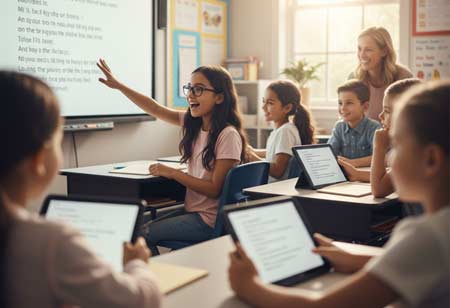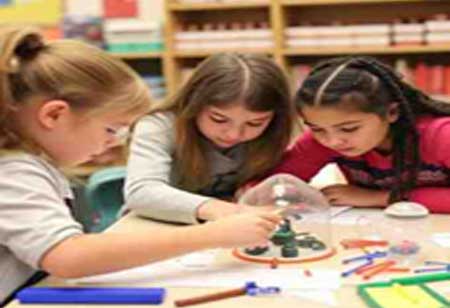THANK YOU FOR SUBSCRIBING
Be first to read the latest tech news, Industry Leader's Insights, and CIO interviews of medium and large enterprises exclusively from Education Technology Insights
A Guide to Enhancing Student Engagement
Student engagement stands as a cornerstone of effective teaching and learning, encompassing the active participation, enthusiasm, and investment of students in their educational journey.

By
Education Technology Insights | Tuesday, October 31, 2023
Stay ahead of the industry with exclusive feature stories on the top companies, expert insights and the latest news delivered straight to your inbox. Subscribe today.
Technology allows for personalized learning experiences where students can progress at their own pace, boosting their confidence and ownership over their education.
FREMONT, CA: Student engagement stands as a cornerstone of effective teaching and learning, encompassing the active participation, enthusiasm, and investment of students in their educational journey. A well-engaged student is likely to develop critical thinking skills and achieve academic success. In a diverse and technology-driven educational landscape, fostering and maintaining student engagement poses strategic challenges that educators must address. The methods shift the focus from passive listening to active participation, encouraging students to interact with the material and each other.
Group discussions, problem-solving activities, debates, and collaborative projects require students to apply their knowledge, leading to a deeper understanding of the subject matter. Educators tap into their innate curiosity and desire for hands-on experiences by involving students in the learning process. When used effectively, technology can enhance student engagement by catering to various learning preferences and styles. Complex concepts can be made more accessible and engaging through virtual simulations, interactive online platforms, and multimedia presentations. Gamification elements, such as quizzes, challenges, and rewards, motivate students to participate actively and consistently.
Demonstrating the real-world relevance of academic content is crucial for sustaining student engagement. When students understand the practical application of their learning, they become more motivated to invest their time and effort. Incorporating case studies, examples from current events, and connections to students' experiences helps bridge the gap between theoretical knowledge and its actual use. It enhances engagement and equips students with transferable skills for their future careers. Creating a positive and inclusive learning environment impacts student engagement.
Instructors who show genuine enthusiasm for the subject can inspire students and ignite their curiosity. Encouraging open communication, active listening, and a sense of community fosters a comfortable atmosphere where students feel confident sharing their thoughts and asking questions. Traditional assessment forms, such as exams and essays, might only sometimes capture students' diverse skills and talents. Employing various assessment methods, such as presentations, projects, portfolios, and peer evaluations, accommodates different learning styles and allows students to showcase their strengths.
A student-centered approach places learners at the heart of the educational process. By allowing students to have a say in their learning objectives, activities, and even assessment criteria, educators empower them to take ownership of their education. Autonomy fosters a sense of responsibility and motivation to excel. Soliciting student feedback about their learning experiences can lead to continuous improvement in teaching methods. When students feel valued, respected, and supported, they are more likely to actively participate in class activities. It promotes engagement and prepares students for the multifaceted challenges of the modern world.







